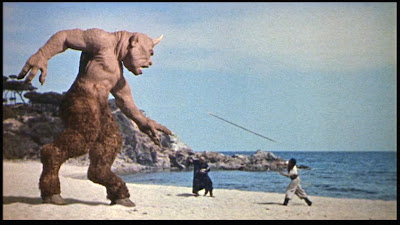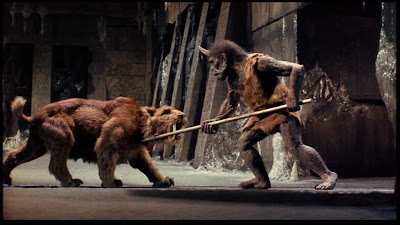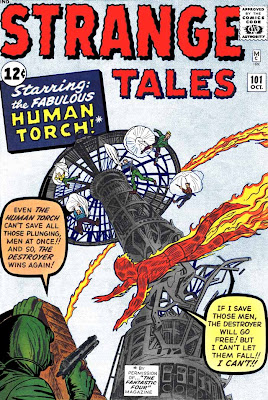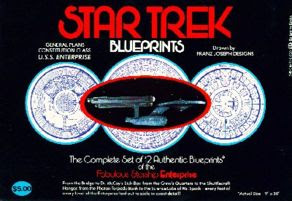
In the 23rd Century, a scientist named Zarrko (aka the Tomorrow Man) is bored with universal peace and harmony. Using a time machine, he comes back to the 20th Century to steal a nuke and have himself some fun.
Thor calls on his father Odin for the power to pursue Zarrko back to the future, where he finds the villain has used the threat of the bomb to take over the world. Some tussles with giant robots and death rays quickly ensue.
It’s nice that Lee and Kirby continue to remind us that Thor is a part of the whole Norse pantheon. It’s continued to be made clear that Thor has a history stretching back to before he reappeared on Earth as part of a shared identity with Donald Blake. As I’ve stated in previous issues, it’s when Lee and Kirby decide to build on this concept that Thor will get really, really good. Until then, though, we’re still being presented with pretty good plots and excellent visuals.
Strange Tales #102

A super-scientist called the Wizard decides to battle and defeat the Human Torch, pretty much just to prove that he can. He manages to capture Johnny and then, wearing a special suit that allows him to simulate the Torch’s powers, he goes on a criminal rampage. But, with a little help from the Invisible Girl, the Torch gains the upper hand in the end.
The whole Johnny-has-a-secret-identity thing, a direct contradiction of how he’s portrayed in the FF, is still getting on my nerves. The Wizard’s motivations are weak and his plan is silly.
Perhaps the silliest moment comes when he captures the Torch. He’s sprayed the Torch’s body with water. Only the Torch’s head is still flamed on, preserving Johnny’s secret identity. All the Wizard has to do is spray a little water on Torch’s head to find out who he is. Instead, he goes through a complex plan to discredit Johnny and blackmail him into revealing is identity. AS IF JOHNNY IS EVEN SUPPOSED TO HAVE A SECRET IDENTITY!!!!
Oh, well, at least we get another regular FF villain onto the scene. Though the Wizard doesn’t acquit himself very well this time around, he’ll eventually build himself up into a reasonable threat in future issues of the Fantastic Four.
Next time, we’ll start our look at December 1962. Namor comes back to bother the FF; Johnny continues to get on my nerves; Ant Man meets the closest thing to an arch-enemy he’ll ever have; and Thor takes a thematic step backwards to battle Communists.





















